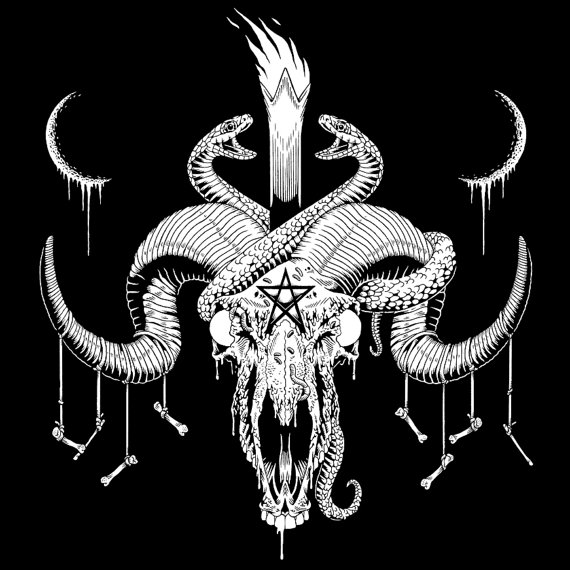SABAZIOS
"Saddest of all that cluster round the tomb
(Three sister Fiends of Cithaeronian gloom),
"See Crime, Pain, Poverty, the ether rend
With howls Sabazian at their master's end."
H.P. Lovecraft, Monody On the Late King Alcohol
"Sabizios is possibly a serpent creator deity or a
serpent god of the underworld. He might have been one of the deities of
the Valentinus Gnostic sect. Sabizios is sometimes associated with the
goddess Barbelo who was said to be his mother. He is also identified
with Jehova. Some say he was worshiped under the name Zgreus by the
Thracians and Phrygians."
Charles Russell Coulter & Patricia
Turner, Encyclopedia of Ancient Deities
"Originally Sabazius was the Thracian and Phrygian
god of vegetation, worshiped in the north of the Balkan and in the
central part of Anatolia in Asia Minor. His cult spread from Thrace in
the north of Greece to Attica and to Athens in the fifth century BCE.
There Sabazius took on a special appearance and role in relation with
the Attic cults and the favorite local deities. In Athens Sabazius
became the god of barley."
"An important symbol of his cult was a
snake, which is a chthonian symbol as well as one of revival. Another
symbol of Sabazius was a crown (with two small snakes raising their
heads) worn by the god himself and by some of the members initiated into
his cult. Small snakes encircled also the hands of his worshipers. The
cult of Sabazius (similar to that of Cybele or Dionysus) was accompanied
by music, particularly by the players of double flute and castanets,
and by ecstatic dancers holding these small snakes."
"He did not
appear in Attica on a horseback as it was described in the other
regions. A cult-scene pictured on the volute krater made by the
Polygnotan Group (Ferrara 2897) represents Sabazius with Meter seated on
their thrones, with in their scepters and plates (perhaps with barley)
and surrounded by their worshipers."
Dr. Alena Trckova-Flamee Ph.D., Encyclopedia Mythica











